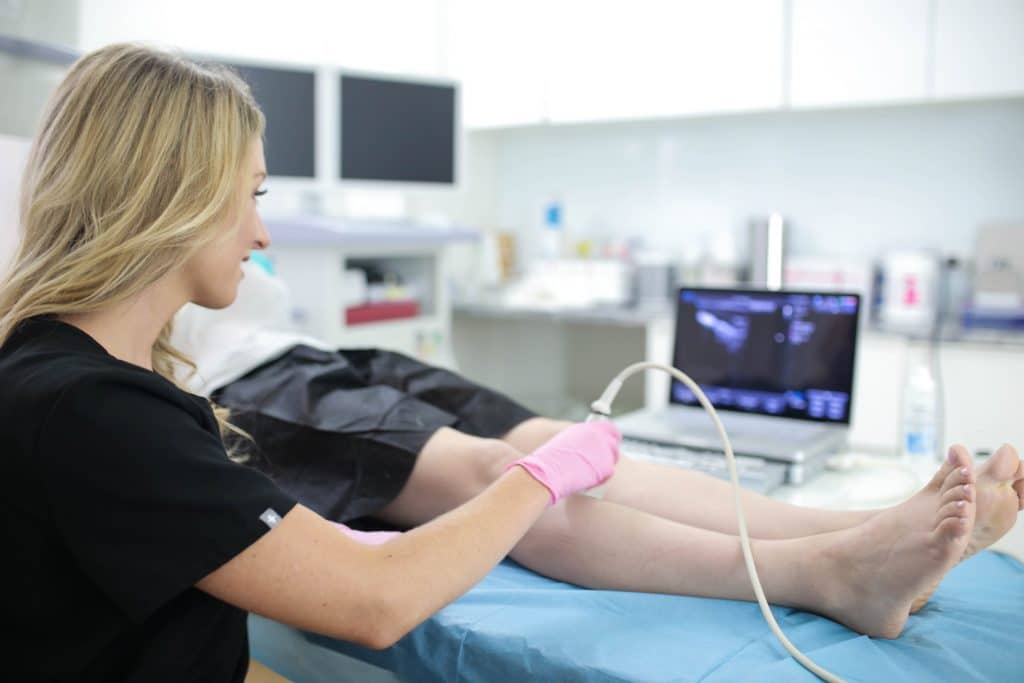What can I expect from a spider vein center near me in Suffolk County?
If you have spider veins or varicose veins, you must find some of the best Long Island vein doctors who provide minimally invasive varicose vein treatments. You must consult a vein doctor in Suffolk County, Long Island, because spider veins are often caused by underlying chronic venous insufficiency.
If you have vein disease, also known as chronic venous insufficiency, your spider veins will rapidly spread, and you’ll eventually suffer from other vein disease complications. Some of the advanced vein disease complications are varicose veins, severe bleeding, skin disease, skin infection, leg discoloration, and deep vein thrombosis. As such, if you have spider veins, you must consult some of the best board-certified Long Island vein doctors.
If you live in Suffolk County, you may wonder, “what can I expect from a spider vein center near me in Suffolk County?” In fact, most people with vein disease don’t consult Long Island vein doctors for one of two reasons. First, they believe it’s not serious because of the benign initial symptoms, such as restless legs, frequent leg cramps, and spider veins. Second, they’re concerned about the complexity of the varicose vein treatment.
Well, rest assured, minimally invasive varicose vein treatments are simple, non-surgical, and painless. However, you must avoid vascular surgeons who recommend varicose vein surgery because surgical procedures are complicated and relatively risky.
To put your mind at ease, we will give you a detailed description of what you can expect from varicose vein treatment at a spider vein center near me in Suffolk County, Long Island.
Step 1: Long Island vein doctors diagnose the root cause of spider veins.
Step 2: Board-certified vein specialists curate a minimally invasive treatment plan.
Step 3: State-of-the-art varicose vein treatment clinic provides minimally invasive treatments.

Step 1: Long Island vein doctors diagnose the root cause of spider veins.
Spider veins may or may not be caused by underlying chronic venous insufficiency. Vein disease is a circulatory disorder in which your vein valves collapse and blood accumulate in your leg veins, leading to spider veins, varicose veins, and other complications. As such, the Long Island vein doctors must identify if you have a diseased saphenous vein. If they treat spider veins without addressing the underlying venous insufficiency, your spider veins will return later.
The first step of the diagnosis process is to visually and physically inspect your spider veins and varicose veins. The Long Island vein doctors will examine your spider veins to determine how large and prominent they are. Following that, the Long Island vein doctors will also ask you to describe the symptoms of vein disease, such as restless leg syndrome, leg heaviness, frequent leg cramps, and throbbing leg veins.
Finally, the vein specialist will schedule a Duplex Ultrasound test. During this vascular imaging test, the vein doctor will use ultrasound to visualize the direction of the blood flow in your leg veins. This test will determine if your spider veins are caused by underlying chronic venous insufficiency.
Step 2: Board-certified vein specialists curate a minimally invasive treatment plan.
Following the diagnosis of the root cause of spider veins, the vein doctor will curate a minimally invasive treatment plan. If you have spider veins without underlying vein disease, the best board-certified Long Island vein doctors will recommend sclerotherapy spider vein treatment. Some Long Island vein doctors may also recommend laser therapy, but you should avoid that.
If you have underlying vein disease, the vein doctor will recommend a minimally invasive varicose vein treatment, such as radiofrequency ablation, endovenous laser ablation, or VenaSeal. Following the primary vein treatment, the Long Island vein doctors will treat the superficial varicose veins and spider veins using sclerotherapy.
Step 3: State-of-the-art varicose vein treatment clinic provides minimally invasive treatments.
After the Long Island vein doctors discuss your minimally invasive varicose vein treatment options, they will schedule the procedure. Minimally invasive varicose vein treatments are non-surgical and in-office procedures that conclude within an hour with no downtime. As such, you can schedule the varicose vein treatment during your office hours.
During the primary varicose vein treatment, the board-certified Long Island vein doctors will identify the diseased saphenous vein using ultrasound guidance and shut it down. The vein specialists will use thermal energy, laser energy, or medical adhesives to collapse or seal the diseased vein. Once the diseased vein is removed, the accumulated blood will reroute to healthier veins, restoring smooth blood circulation to the heart.
Following the primary varicose vein treatment, the board-certified vein doctor will use sclerotherapy to remove the spider veins and superficial varicose veins. During sclerotherapy, the vein doctor injects a medicine called sclerosant into the spider veins to seal their vein walls, turning them into scar tissue that eventually gets absorbed by the body.
Schedule an appointment with a spider vein center in Suffolk County, Long Island.
Vein Treatment Clinic is widely hailed as the best spider vein center in Suffolk County, Long Island. We have some of the best board-certified Long Island vein doctors. They specialize in the latest minimally invasive varicose vein treatments and maintain a perfect track record. Our spider vein center is located in Lindenhurst, which is right on the border of Suffolk County, a short drive from the southern state parkway. For more information, please schedule an appointment with our spider vein clinic near Suffolk County today.